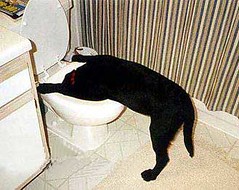Tags
Ok. We've talked a little bit about tags before. Let's talk about how to use them. We'll start with some easy ones. The idea behind HTML is to tell the browser how to draw your data. The simplest form of that is text formatting. If we want some part of our sentence to be bold, all we have to do is surround that part of the text with the bold tags: <b> and </b>.Tags are always surrounded in <these>. Also, notice that the second tag is just the same with an added /. That basically means end. so:
This is some <b>bold text</b>.
means
This is some [Start bold text here]bold text[End bold text here].
Ok, so there's the bold tag. What other tags are there? There are a couple other really simple ones that you may be interested in.
- <b>bold</b>
- <i>italic</i>
- <u>underline</u>
Attributes
Those ones are ok. But it does get just a bit more complicated than that if you want to do more. One more thing we have to talk about is attributes. An attribute is just a further description of a tag. For example:This is <font >some red text</font>.
See the attribute? Yep, 'color="red"'. Makes sense, don't it. Let's look at a couple more uses here.
- <A href="http://www.spam.com">Links</a>
- <IMG src="http://photos2.flickr.com/1682253_d8bcd882c2_m.jpg">

- <font >font colors</font>
<a href="http://www.spam.com"><img src="http://photos2.flickr.com/1682253_d8bcd882c2_m.jpg"></a>
If you want to test out your own html before publishing it to the world, you can. All you have to do is follow these steps:
- Using notepad or another plain text editor, create a new text file. Plunk your code right in there.
- Save that file as "test.htm" or "anythingelse.htm", for that matter.
- Drag and drop that file right into any open web browser window.
- You can keep making changes just by editing the file and saving it, then clicking refresh in the browser.
1 comment:
Great post. Can’t wait to read the next ones :).
Post a Comment